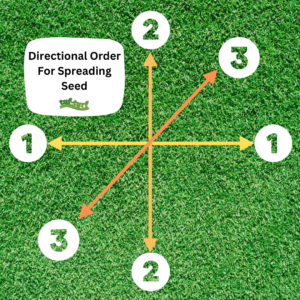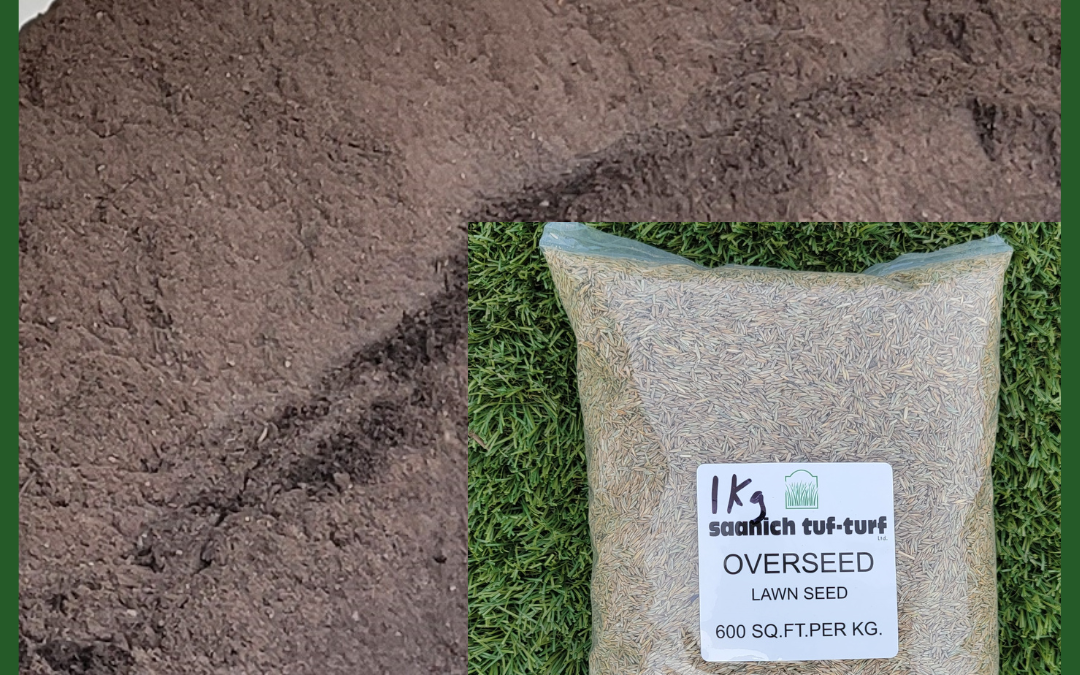A lush green lawn is the goal of most homeowners. However, achieving that beautiful green lawn requires a maintenance program including a few simple steps. Overseeding is a great step to renovate your lawn but always remember the other key steps including appropriate watering, a fertilizer program (3 to 4 times a year), consistent mowing, and optimum soil for plant growth (yes lawns, grass are plants). Overseeding is the process of planting grass seed over an existing lawn to thicken it up and improve its health. The benefits of a thick lawn are important and include, water retention, stronger weed prevention, and an overall cooling effect. While overseeding is a relatively simple process, it requires a bit of preparation and attention to detail to ensure success. In this blog post, we’ll explore the proper way to overseed your lawn.
Choose the Right Time
The optimal time to overseed your lawn is in the spring when daytime temperatures reach 15 degrees Celsius and nighttime temperatures stay above 8 degrees Celsius. This timeframe allows for advantageous temperatures (cooler than summer) and taking advantage of spring rainfall. An alternative time (weather dependent) can be the end of summer as temperatures start to drop and before the cold weather and torrential rains come into effect.
Prepare the Lawn
Mow the lawn to a short height of about 1.5 inches ( different than the recommended 2 to 2.5 inches standard height), and remove any debris or thatch from the lawn. Rake the lawn thoroughly, ideally with a power rake or with a stiff-tined rake to loosen the soil and create a better seed-to-soil contact.
Add Topdressing (sandy soil – sandy lawn blend)
We recommend a sandy lawn blend soil that is up to 40% sandy (see our blog about soil types). A suggested thickness of soil should be approx. 1/8 of an inch thick which equals 1 yard of soil for a 1500 square foot lawn (use our soil calculator to help with your own lawn). A good ” do it yourself ” method for a homeowner is to “throw it in a long arc” using a shovel just like you were feeding chickens (a great tip courtesy of Lee Smith Landscapes). Watch for clumps. If the soil gets too thick, the grass will die that’s underneath.
Seed Selection
Choose a high-quality grass seed mix that is appropriate for your climate and soil type. Do your best to match the seed to your existing grass to ensure a uniform look. Buying your seed from the same source every year will help maintain this.
Spread the Seed
Choose a high-quality grass seed mix that is appropriately blended to our region (seed blended for other regions may not produce the right result). At tuf-turf we sell overseed specifically blended for the southwest coast. Spread the seed evenly over the lawn, using a spreader, at a very low dispersion rate (each spreader is different) making sure to overlap each pass slightly. We recommend a directional process (see diagram) to provide great coverage and appropriate overlap. It’s better go over the area multiple times and get even coverage than to do fewer passes and get uneven coverage.

Raking
Use a soft tined leaf rake. Rake the area in multiple directions to blend the seed and soil which will also help evenly spread out the soil.
Fertilize the Lawn
Fertilize the lawn with a high-quality fertilizer that contains a balanced blend of nitrogen, phosphorus, and potassium. We suggest using the tuf-turf seed starter blend fertilizer. Fertilize again after six to eight weeks, using a spring-summer blend fertilizer to ensure the new grass seedlings and your lawn continues to grow and develop.
Water the Lawn
The first thing you should understand is how a seed germinates. A seed will start to absorb moisture as soon as water is available to it. It will swell and crack and put out a ½ inch long very fine root “hair.” This hair is searching for nutrients and accessible moisture to continue to grow the plant. The root hair is very fine, small and delicate. If it dries out it will quickly die and become nothing more than bird food. We recommend, depending on weather conditions (heat, wind, shade) to water very lightly (3 to 5 minutes) 3 to 4 times per day, especially during the heat of the mid-day and afternoons. This will ensure the seed never dries out at any time. Overwatering can be just as bad as letting it dry out. Never let your lawn become soggy as the roots will not develop and may rot.
In conclusion, overseeding is the appropriate step if your lawn needs renovation. Overseeding can be a part of your lawn maintenance to help to improve the health and appearance of your lawn. By following the proper steps, you can ensure success and enjoy a lush green lawn all year round.

